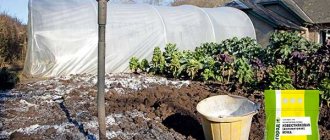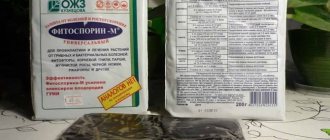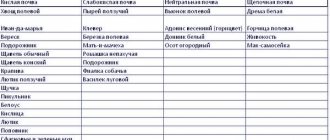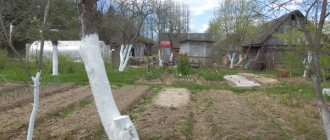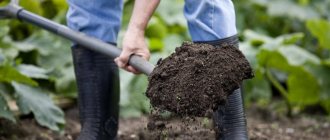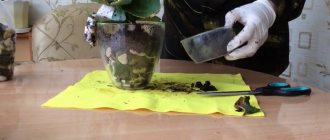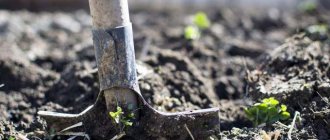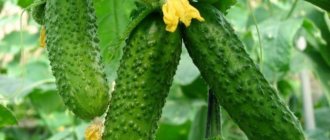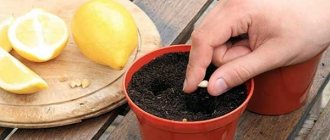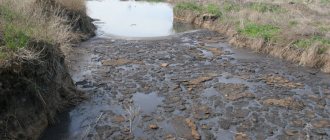In order to get a good harvest in the garden or garden, it is necessary not only to sow seeds and plant seedlings or seedlings, but also to provide the soil with proper care. To do this, many gardeners and gardeners resort to chemicals. One of these products is fluff lime. There are many reasons to use this chemical in the garden.
Varieties and their uses
The use of fluff lime in vegetable gardens and orchards is due to the fact that their owners prefer natural farming, so they use substances of organic origin (calcium lime). It is divided into two types:
- Quicklime;
- Slaked.
If application standards are followed and used correctly, both of these types are safe for plants and humans. Calcium lime is used as a food additive (E-529). Fluff is a white powder that dissolves in water, a product of the processing of chalk, limestone and other minerals of the carbonate group. The main rock-forming elements are dolomite and calcite.
Application of quicklime
It is used in the garden, in horticulture, in construction, and in the country.
The main hydraulic qualities are determined by the number of silicates and crystals of calcium aluminoferite, which is determined by the round shape of a yellow, brown or black hue. Based on these characteristics, several types of lime can be distinguished:
- Sadovaya - used to enrich the soil with an acidity coefficient;
- For whitewashing;
- Construction - used for concrete mixtures, bricks;
- Disinfectant chlorine substance.
Due to changes in the structure, chemical composition and properties of metal alloys, lime is used as a cleaning agent.
Many people have stopped using the chemical even in building houses because quicklime collects moisture. In the chemical industries, lime is used in the synthesis of organic compounds. You can work with it in cold weather, because when it is extinguished, enough heat is generated, and the temperature does not drop.
It cannot be used to treat any device that heats a building, as liquefied carbon dioxide is generated.
What is slaked lime
Fluff is slaked lime, which can be obtained at home using ordinary quicklime. The slaking process is a reaction between lime powder and water, which lasts several minutes. During the reaction, a kind of “melting” of the substance occurs - converting it into a form that is more convenient for use and safer for plants. In this case, the following must be taken into account: to extinguish lime, you cannot use hot water, since high temperature neutralizes the beneficial properties of the product.
Lime milk is made from freshly slaked lime, which is used as a disinfectant.
Difference between slaked and quicklime
It would be logical to think that if slaked lime exists, then there must be quicklime. How does it differ from slaked, and where is it used? No matter how contradictory it may sound, the word “lime” is of Greek origin and means “unquenchable.”
Quicklime has a granular appearance. Previously, quicklime could be used for construction work as cement, but as a result of this use, its not the best properties were noticed, namely, the absorption of moisture and the proliferation of fungal mold. Despite this, quicklime is widely used in construction for the production of slag concrete, paints, sand-lime bricks, and plastering materials. In the food industry, quicklime acts as an emulsifier, helping to bind substances whose properties do not allow them to dissolve in each other. Quicklime is also used in the process of neutralizing wastewater and flue gases.
The main difference between slaked and quicklime is the chemical formula. Slaked lime is calcium hydroxide, quicklime is calcium oxide. Unlike slaked lime, which is most often found in powder form, quicklime is granular.
Use in gardening and horticulture
This substance is used to treat plants against pests; in addition, it is a soil amendment. It is added in crushed form in the manufacture of animal feed. Lime fertilizers have long been used in agriculture to improve soil fertility and to reduce the percentage of acidity. There are hard lime fertilizers and soft ones. Hard ones, such as limestone and chalk, are burned or prayed before being added to the ground. Soft ones work more effectively because they do not need to be processed in advance.
How to dilute lime for whitewashing?
Mix the components thoroughly:
- clay (300 g);
- dry mullein (1 kg);
- copper sulfate (200 g);
- lime (1 kg);
- water (10 l).
The solution is left to swell. You can start processing trees after 2-3 hours. A guarantee of a positive effect is possible only if the recipe is strictly followed.
The use of fluff lime for liming the soil, as well as for controlling pests and weeds, helps to obtain a high-quality and rich harvest.
Applying fertilizer to the soil
Lime is applied in the fall or spring, and the ground is dug up beforehand. In this case, the substance eventually penetrates into the soil along with rain.
It is preferable to dig up the soil in the fall. This should be done immediately after harvesting. Fertilizers are spread evenly over the area. The main treatment is done to a depth of 22-30 centimeters, for perennial vegetables - 35-40 centimeters. Areas where the plowing was shallow require digging up the podzol (subsoil) and simultaneously applying lime along with organic fertilizers:
- When digging, the top fertile layer is removed, and the subsoil is loosened to a depth of about two centimeters;
- Then you need to add lime there;
- The loosened layer is mixed with fertile soil;
- Organic matter is added - 8-10 kilograms per 1 sq. m;
- The furrow is sprinkled with the top layer of soil.
If you annually carry out loosening and apply fertilizers, the arable fertile layer will increase.
During work, you should adhere to the rules for working with chemicals. If lime suddenly gets on the mucous membrane, you should immediately consult a doctor. After work, be sure to wash your hands and face.
Lime should not be used with compost as it may cause a chemical reaction. Liming acidic soils in recommended doses has a beneficial effect on increasing the population of earthworms, which reproduce very slowly in oxidized soils.
In order to increase productivity, it is necessary to comply with soil liming standards. In autumn the following dosages are established:
- For heavy clay soils: 450−800 g/sq.m. m;
- For light soils, loams, alumina: 350−600 g/sq.m. m;
- For the lightest, sandiest soils: 250−500 g/sq.m. m.
Determination of soil acidity
To determine acidity, a special device is used - a Ph meter. But ordinary summer residents are unlikely to have it. Litmus tests are more readily available. They do not give accurate indicators, but by color you can determine how acidified the soil is:
- blue tint of paper – calcareous soil – alkaline or slightly alkaline;
- green tint – neutral;
- beige color is characteristic of loams;
- red and its shades – the soil is acidic.
If you have nowhere to buy litmus paper or no time, then you need to go out into the garden and carefully examine the soil. If there is a gray-white coating, such as ash, then it is necessary to add lime to the soil in the fall or spring. The amount of lime fertilizers is calculated based on the degree of acidification.
Video: Whitewashing garden crops with lime
Find a low area in the garden where water usually accumulates and see what color it is. If it is brownish-rusty with a film, this also indicates an increased level of acid.
Lime is used for soil in the garden when weeds - dandelion, horsetail or mullein - begin to multiply there.
There is a popular method for determining the presence of acid - vinegar. A few drops of vinegar are poured onto the guest of the earth. If hissing occurs, but the soil does not change color, then there are enough carbonates in it. If the soil turns white and hisses, then you need to decide when and how best to apply lime to the soil - in autumn or spring.
Safety precautions at work
When working with dry substances, it is necessary to avoid inhalation and contact with mucous membranes. It is necessary to constantly ventilate the room. It is best to carry out work outdoors. If these requirements are not feasible, protective bandages, gloves and special masks must be used.
The substance should be stored in an airtight container as it easily draws carbon dioxide from the atmosphere and forms calcium carbonate.
Chemical poisoning
Intoxication occurs as follows:
- A burn, expressed by swelling, forms in the oral cavity. The level of blood flow increases and sudden powerful pain appears;
- Aching pain occurs in the intestinal tract;
- Constantly thirsty;
- Nausea and bloody vomiting, diarrhea may begin;
- Attacks of suffocation appear, a state of shock appears.
Improper use of chemical elements can lead to harmful consequences. Before work is carried out, you must read the instructions for use of the substance indicated on the packaging.
Originally posted 2018-02-26 06:38:18.
Slaked lime - use in the country
First of all, slaked lime is used on the site to lime the soil and increase its fertility, especially if the acidity level (pH) is below 5.5. This substance can also be used in the following cases:
- to combat larvae and adult pests;
- for whitewashing trees;
- for processing wooden bases of benches, gazebos, fences, plant supports, etc.;
- for preventive protection of the cellar, garden tools and other items from mold;
- Sometimes slaked lime is present in the compositions of mortars and mixtures.
Slaked lime is a white powdery substance.
- How much lime should be added to the soil on the site
We tell you how to properly lime the soil.
Properties of lime
The use of garden lime is widespread in agriculture. Despite the fact that many plants cannot tolerate an excess of calcium, it is an essential element in many life processes occurring in all plant organisms. Its presence in the soil complex is necessary to retain hydrogen ions in it, which helps calcium maintain a favorable level of environmental reaction. This element provides the following functions:
- Calcium protects cultivated plants from various diseases, strengthening their own immunity. Liming the soil helps to activate the activity of nodule bacteria, which retain nitrogen in the soil from the air that reaches the roots during loosening. This helps to improve the quality of plant nutrition and, accordingly, increase their resistance to various harmful agents.
- Transport of carbohydrates in plant tissues. Calcium promotes better dissolution of elements in the aquatic environment.
- Strengthening the walls of blood vessels through which aqueous solutions of vital substances move. This property significantly contributes to more active and high-quality development of the root system. In addition, these elements are vital for plant nutrition.
- Adding lime is necessary when forming compost heaps. Ca is a catalyst that activates the activity of beneficial microorganisms that release nitrogen from organic matter and mineralize it. This element also contributes to the formation of humus, as it accelerates the decomposition of organic matter.
- One of the most useful properties of lime is its ability to reduce soil acidity. But, this substance not only normalizes the reaction of the upper soil layer, but also improves its chemical composition, neutralizing the effect of toxic metals - iron, aluminum and manganese. Also, bleach has a positive effect on the structure of the soil, making it less crumbly and more lumpy.
Lime is actively used in agriculture for various purposes. In plant growing, the most relevant are the following:
Advantages and disadvantages of the material
Quicklime has its advantages over slaked lime:
- There is practically no waste when working with such material.
- Quicklime absorbs less moisture than slaked lime.
- You can work with such products at sub-zero temperatures, that is, in winter, since they are capable of generating heat and do not freeze.
- The strength level is high and the application range is wide.
The main disadvantage of lime is the harm it causes to health. Warm vapors can cause burns, so it is necessary to use protective equipment when working.
Work is carried out in a well-ventilated area or outdoors. If the room is not ventilated, then it is necessary to wear a special bandage or respirator so as not to damage the respiratory organs. Special glasses will help protect your eyes from burns.
Quicklime can be found very rarely; it is practically not used. Slaking is done by adding water, which turns the lime from the stone into powder. This product is used both for the production of building materials and in agriculture; it is used to treat trees, fertilize the soil, and get rid of weeds. All work on extinguishing lime must be carried out with caution, use special protective equipment and ventilate the room to avoid poisoning or burns.
Achieving any goal is daily work. If your goal is to get a good harvest, then you will need not only to invest your labor, but also to provide your garden with proper care, attention and care. Surely, the experience of many years has taught everyone that when growing anything in the garden, you cannot do without chemicals.
Most likely, everyone has heard about slaked lime in one area of conversation or another. Slaked lime (or, as it is also called, fluff) has a chemical name - calcium hydroxide. It is interesting that such lime is used in various fields: construction, water softening, leather tanning, dentistry, and the chemical industry. It has also been used in gardening.
What is quicklime?
Quicklime has a crystalline structure; it is formed when limestone is fired. This material may also contain impurities, usually no more than 8 percent. Lime is produced from carbonate rock, and mineral additives, quartz sand or special slag are also used. Lime is produced in compliance with GOST; it belongs to the second hazard class.
Today, quicklime is not used instead of cement, that is, for finishing walls, since it can absorb moisture, resulting in mold and mildew. It is used for the production of various building materials, such as slag concrete, plaster compositions, paints, and so on.
Liming the soil with fluff lime. How is this achieved?
Lime, especially quicklime, is an active alkaline substrate. It not only increases the alkalinity of the soil, but also neutralizes aluminum ions - the main culprits of high acidic pH, binding them into insoluble, and therefore harmless to plants, forms.
Of course, quicklime should not be used to deoxidize the soil. And mainly due to the fact that it always consists of lumps of different sizes, difficult to crush, and this is dangerous for your health - the dust inevitably formed during such grinding gets into the respiratory tract and can cause a burn of the laryngeal mucosa. And large fragments of quicklime in the soil:
- They will irreversibly destroy the microflora living there.
- They will disrupt the vital activity of soil worms and humus suppliers.
- They will deoxidize unevenly, leaving large lumps in highly alkaline areas.
Therefore, for liming, they use ready-made slaked lime called “fluff”, or they slak it themselves. Moreover, this process is not difficult at all. For 1 kilogram of quicklime you need to take 4 liters of clean water. After completing the process, leave the resulting swollen mass and lime milk for 2 days.
During this time, the solid particles will settle, and the remaining limewater on top is drained. The solid sediment is dried and crushed - its structure is homogeneous and easily crumbles and grinds into safe dust. But it’s easier to buy ready-made fluff, already dry and crushed in a form convenient for applying to the soil.
